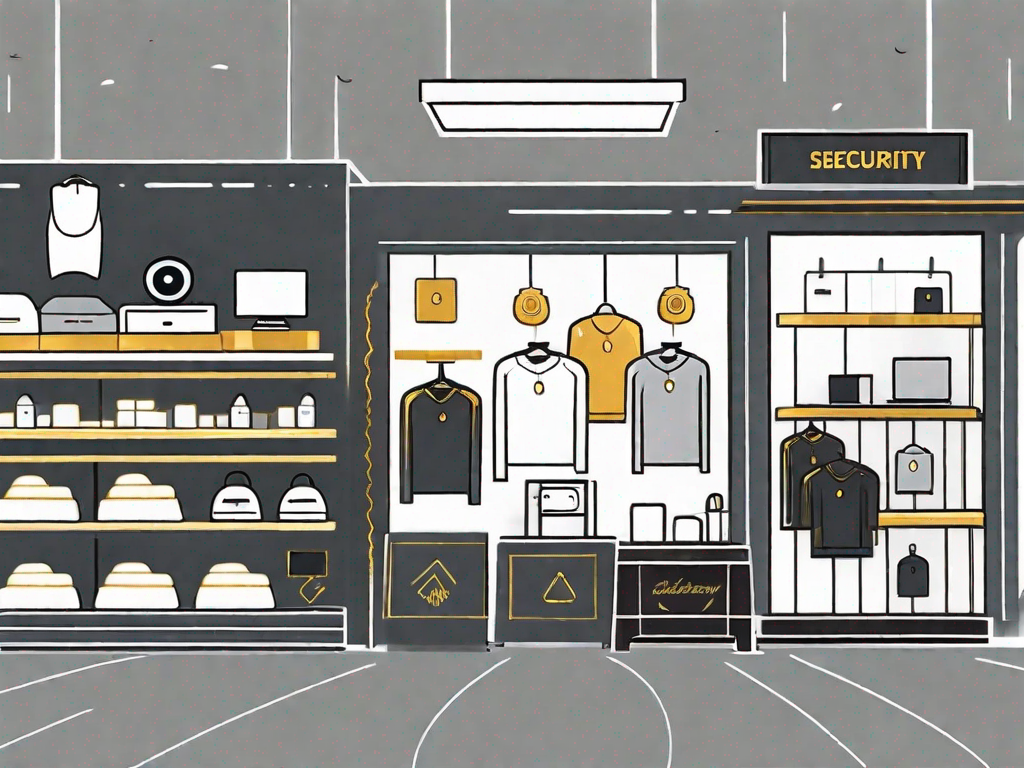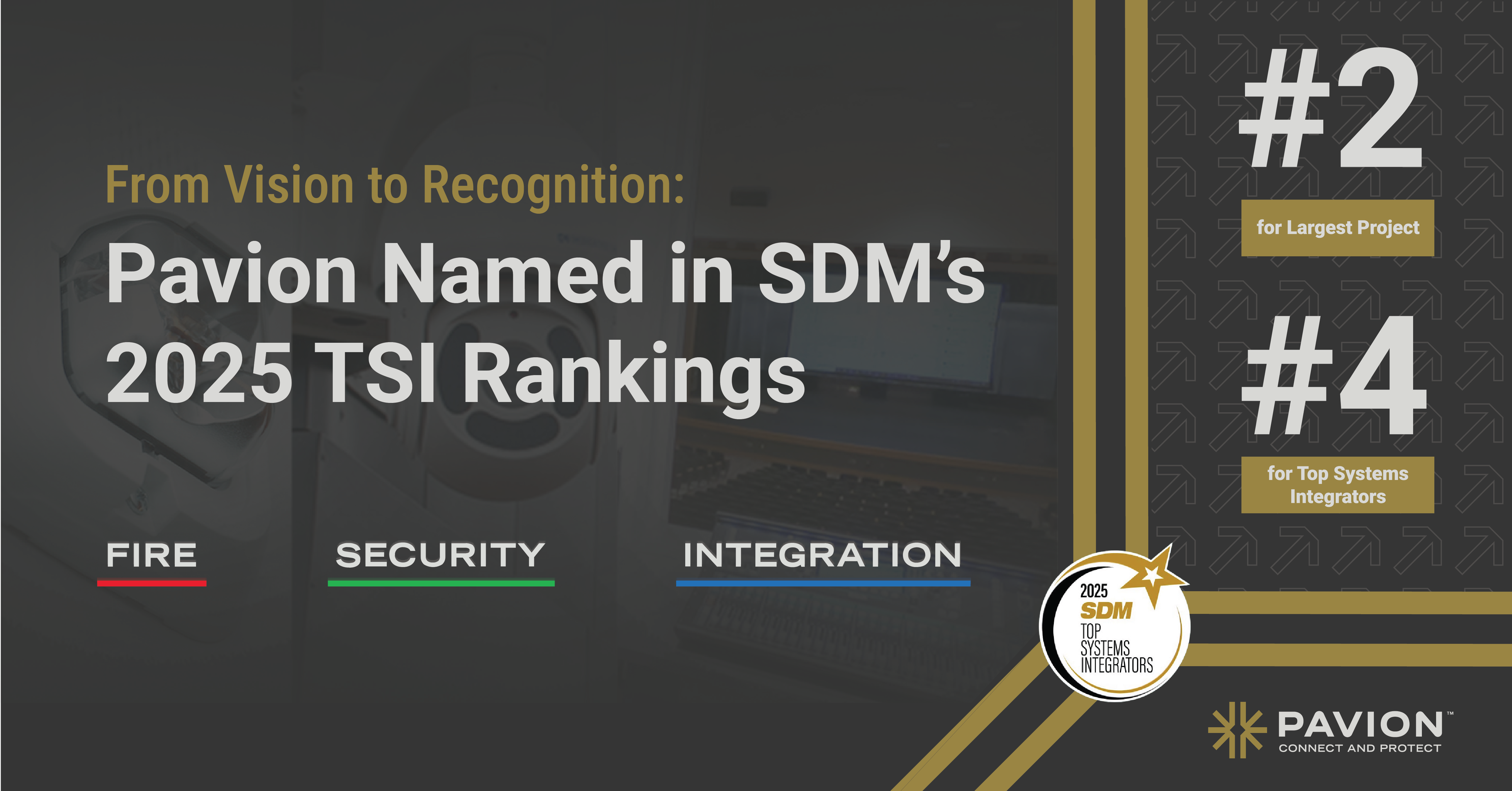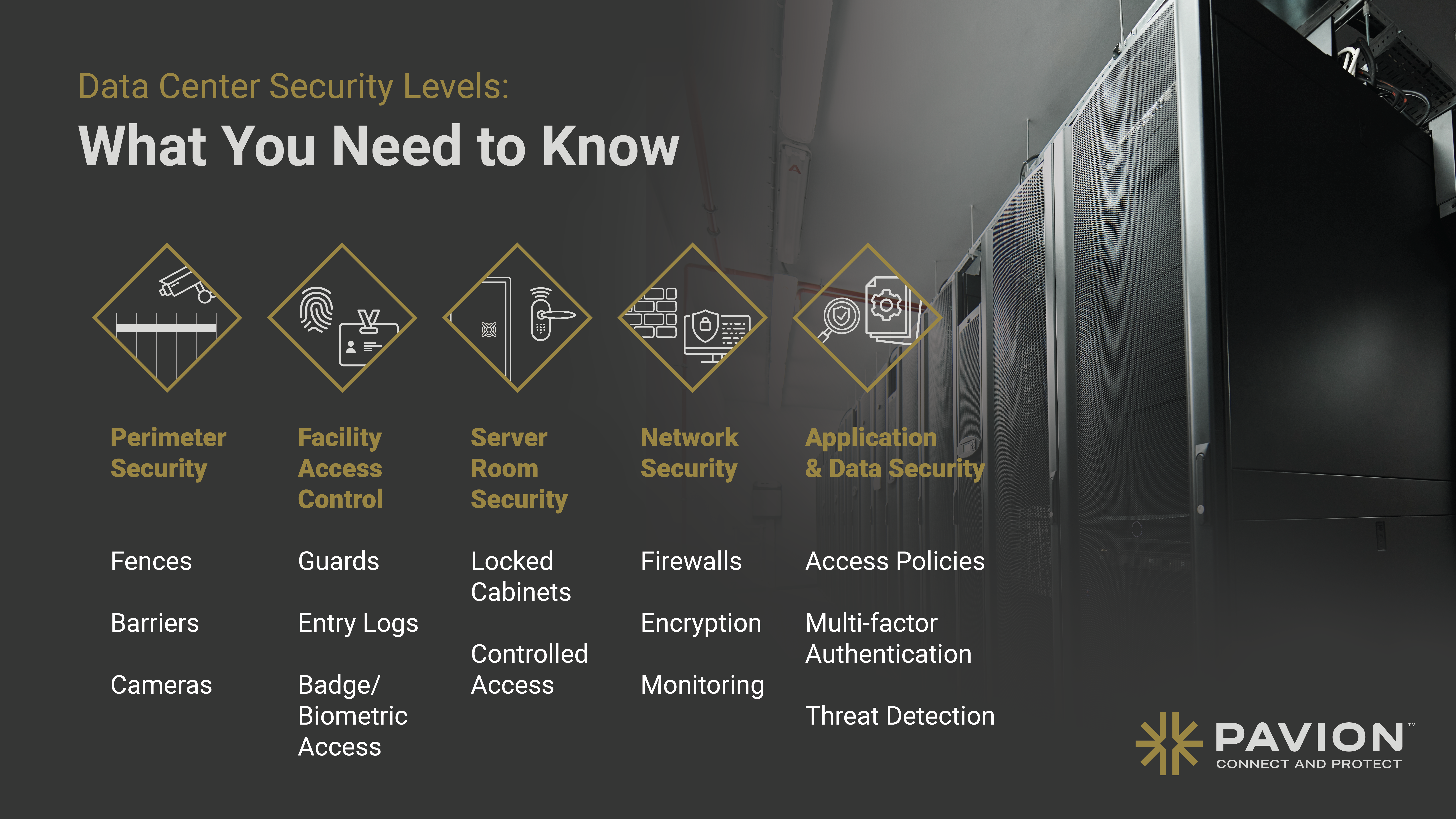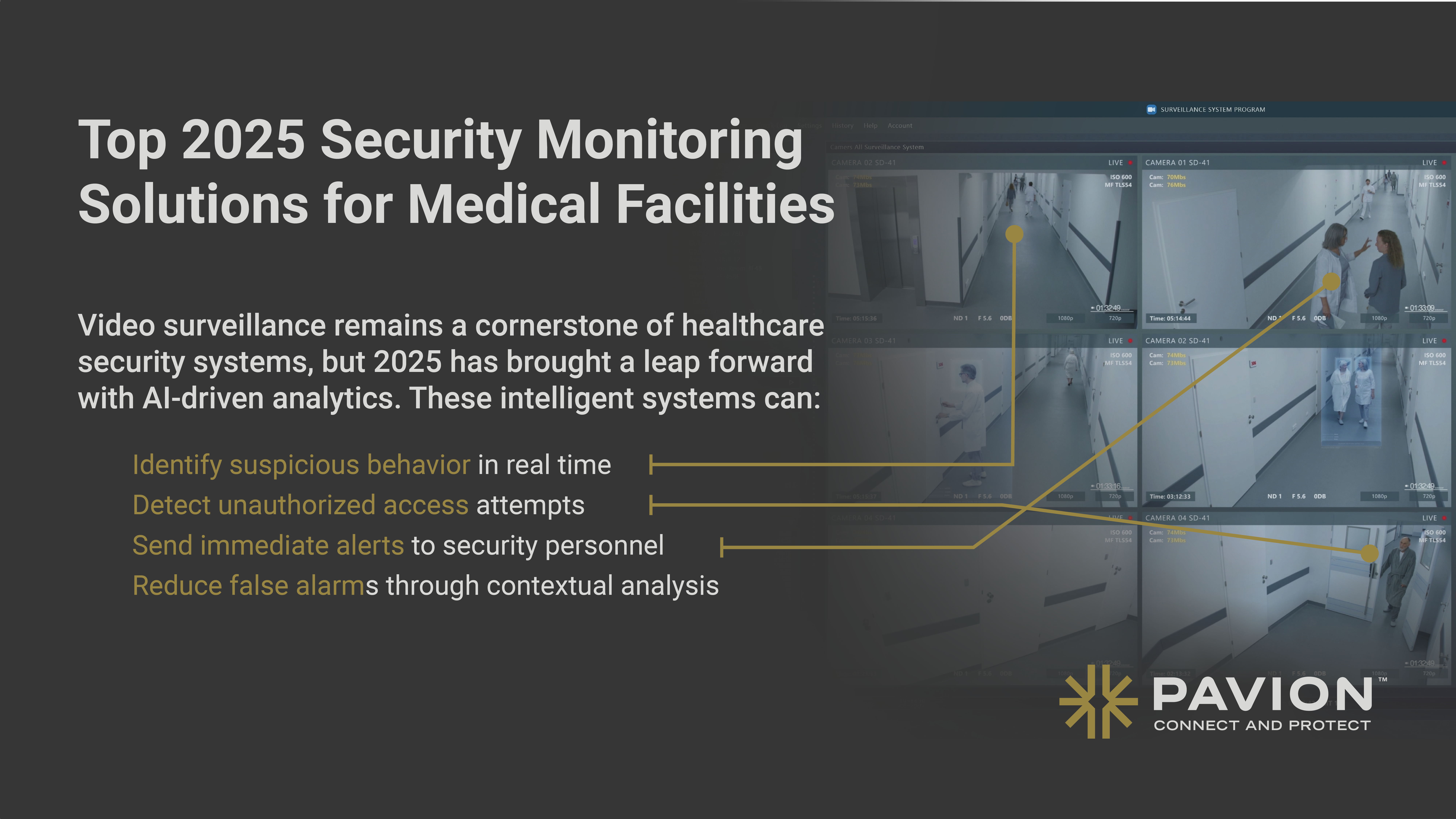
Retail Security Systems: Not as Difficult as You Think
In today’s rapidly evolving retail landscape, ensuring the safety and security of your business is paramount. With a myriad of products and technologies available, retail security systems have become increasingly complex. However, understanding the basics can help demystify the process, making it more manageable and less daunting.
Understanding the Basics of Retail Security Systems
Every retail store, regardless of size, location, or industry, can benefit from a robust security system. Such a system plays a critical role in protecting your assets, deterring criminal activity, and providing peace of mind for both you and your customers.
When it comes to retail security systems, it is important to understand the various components and their significance. These systems go beyond just theft prevention; they also help monitor employee behavior, prevent inventory shrinkage, and minimize liability issues.
Importance of Retail Security Systems
The importance of retail security systems cannot be overstated. Beyond the obvious benefits of theft prevention, these systems can help monitor employee behavior, prevent inventory shrinkage, and minimize liability issues.
Employee behavior can significantly impact the success and reputation of a retail store. By having surveillance cameras in place, you can monitor employee actions, ensuring that they are following company policies and providing excellent customer service. This not only helps maintain a positive work environment but also enhances the overall shopping experience for customers.
Inventory shrinkage, which refers to the loss of inventory due to theft, shoplifting, or employee theft, can be a major concern for retail stores. A well-designed retail security system with surveillance cameras can act as a deterrent, reducing the likelihood of theft and helping identify any potential culprits if an incident does occur. This can save your store significant financial losses and maintain the integrity of your inventory.
Liability issues can arise in a retail environment, especially if there are accidents or incidents involving customers. By having a comprehensive security system in place, you can capture footage of any incidents, providing valuable evidence in case of legal disputes. This can help protect your store from false claims and ensure that justice is served.
Components of a Retail Security System
A well-designed retail security system is comprised of various components that work together seamlessly to create a comprehensive security solution. These components typically include surveillance cameras, access control systems, alarms, and incident response protocols.
Surveillance cameras are the backbone of any retail security system. They provide real-time monitoring and invaluable evidence in case of an incident. By strategically placing cameras throughout the store, you can have a clear view of all areas, including entrances, exits, aisles, and cash registers. This allows you to monitor customer behavior, employee actions, and any potential security threats.
Access control systems ensure that only authorized individuals have access to restricted areas, further enhancing security measures. This can include keycard access, biometric systems, or PIN codes. By limiting access to certain areas, you can prevent unauthorized individuals from entering sensitive areas such as stockrooms, offices, or cash handling areas.
Alarms serve as a deterrent, alerting both employees and authorities in the event of a breach. These alarms can be triggered by unauthorized access, motion detection, or even fire or smoke. By having audible alarms, you can quickly notify employees and customers of a potential threat, allowing them to take appropriate action or evacuate the premises if necessary.
Finally, incident response protocols outline procedures and actions to be taken in the event of an emergency, ensuring a swift and efficient response. These protocols should include steps to follow in case of theft, fire, medical emergencies, or any other potential threats. By having well-defined protocols in place, you can minimize panic and confusion during an emergency, ensuring the safety of everyone involved.
In conclusion, retail security systems are essential for any retail store. They provide protection against theft, monitor employee behavior, prevent inventory shrinkage, and minimize liability issues. By investing in a comprehensive security system with surveillance cameras, access control systems, alarms, and incident response protocols, you can create a safe and secure environment for both your employees and customers.
Simplifying Retail Security: A Step-by-Step Guide
Implementing a retail security system doesn’t have to be an overwhelming task. By following a systematic approach, you can identify your store’s specific security needs, choose the right system, and successfully implement it.
Identifying Your Retail Store’s Security Needs
The first step in simplifying retail security is to assess your store’s unique security needs. Conduct a comprehensive security audit to identify potential vulnerabilities and areas of concern. Consider factors such as location, store layout, high-risk merchandise, and previous security incidents. This assessment will serve as the foundation for selecting an appropriate security system.
During the security audit, it is important to thoroughly examine the physical aspects of your store. Look for blind spots in your surveillance coverage, such as areas with limited visibility or hidden corners. These areas can be potential targets for theft or other security breaches. Additionally, consider the layout of your store and how it may impact security. Are there areas that are more prone to shoplifting due to poor visibility or lack of staff presence? Look for exits that are concealed as this can be an easy place for internal theft to occur. Also, where are your dumpsters – this is a common spot for employees who are stealing to bring items, place them behind or next to the dumpster and alert someone else to pick up these items.
Furthermore, analyzing your inventory is crucial in identifying your security needs. Take note of high-value items or merchandise that is particularly attractive to thieves. This will help you determine the level of security required to protect these assets effectively.
Choosing the Right Security System
Once you have a clear understanding of your retail store’s security needs, it’s time to choose the right security system. Research reputable security providers, compare their offerings, and seek recommendations from industry peers. Consider factors such as cost, scalability, ease of use, and customer support. It’s crucial to select a system that aligns with your business goals and provides the necessary protection for your specific requirements.
When evaluating security providers, look for those that offer advanced features such as video analytics and remote monitoring capabilities. These technologies can enhance the effectiveness of your security system and provide valuable insights into your store’s operations. Additionally, consider the scalability of the system. As your business grows, you may need to expand your security measures, so it’s important to choose a system that can accommodate future needs.
Another important aspect to consider is the ease of use of the security system. Opt for a system that is intuitive and user-friendly, as this will minimize the learning curve for your employees. Additionally, ensure that the security provider offers reliable customer support, as you may need assistance with troubleshooting or system maintenance.
Implementing Your Retail Security System
Implementing a retail security system requires careful planning and coordination. Engage with security experts or consultants who can guide you through the installation process. They can help you determine the optimal placement of surveillance cameras, alarms, and other security devices to maximize coverage and effectiveness.
Training your employees on using the security system effectively is crucial for its successful implementation. Conduct comprehensive training sessions to ensure that your staff understands how to operate the system, recognize suspicious behavior, and respond appropriately to security incidents. Emphasize the importance of adhering to security protocols and maintaining a vigilant attitude towards security.
Regularly review and update your security measures to adapt to evolving threats. Stay informed about the latest advancements in retail security technology and consider implementing additional features or upgrading your system as needed. Conduct periodic security audits to identify any new vulnerabilities and address them promptly.
By following these steps, you can simplify the process of implementing a retail security system and ensure the safety and protection of your store, employees, and merchandise.
Overcoming Common Challenges in Retail Security
While retail security systems offer numerous benefits, they are not without challenges. Here are three common challenges that often arise and strategies to overcome them.
Dealing with False Alarms
False alarms can be a significant nuisance, resulting in wasted time and resources for both the store and law enforcement agencies. To minimize false alarms, ensure your security system is properly calibrated and regularly maintained. Conduct thorough training for employees, emphasizing the importance of following proper procedures to prevent false triggers. Regularly review and update your alarm system to improve its accuracy.
Additionally, consider implementing advanced technologies such as video analytics and artificial intelligence. These technologies can help distinguish between genuine threats and false alarms by analyzing patterns and behaviors. By leveraging these innovative solutions, you can significantly reduce false alarms and enhance the overall efficiency of your retail security system. Also consider video verification monitoring which will help get law enforcement dispatched faster in the case of a real threat or emergency.
Ensuring System Compatibility
As technology evolves, ensuring compatibility between different security system components can be challenging. When expanding or upgrading your retail security system, consult with experts to ensure compatibility and integration with existing infrastructure. Regularly update software and firmware to ensure smooth operation and optimal performance.
Moreover, consider adopting open standards in your security system. Open standards facilitate interoperability between different devices and systems, allowing for seamless integration and compatibility. By embracing open standards, you can future-proof your retail security system and easily incorporate new technologies as they emerge.
Maintaining Your Security System
Maintaining your retail security system is vital to its effectiveness. Regularly inspect and test all components, including cameras, alarms, and access control systems. Keep firmware and software up to date to address security vulnerabilities. Train employees on maintenance procedures and encourage them to report any issues promptly. Consider partnering with a reputable security provider who can handle ongoing maintenance and support.
In addition to regular maintenance, it is crucial to stay informed about the latest security threats and trends. Attend industry conferences, participate in webinars, and engage with security professionals to stay updated on best practices and emerging technologies. By staying proactive and well-informed, you can ensure that your retail security system remains robust and effective in the face of evolving threats.
Furthermore, consider implementing a comprehensive security awareness program for your employees. Educate them about the importance of following security protocols, such as strong password management and identifying social engineering attempts. By fostering a culture of security awareness, you can significantly enhance the overall security posture of your retail establishment.
The Role of Technology in Retail Security
Rapid advancements in technology have revolutionized retail security systems. These technological innovations offer enhanced capabilities, increased functionality, and improved convenience for both retailers and customers.
One of the most significant advancements in retail security technology is the use of artificial intelligence (AI) and video analytics. These technologies enable retailers to analyze video footage in real-time, automatically detecting suspicious activities and potential security threats. AI-powered algorithms can identify patterns and behaviors that may indicate theft or other criminal activities, alerting security personnel and allowing for immediate intervention. One of the other benefits to retail security is the ability for most video surveillance systems to integrate to most point of sale systems. This allows the store manager or owner to see, on the video screen, not only the recorded actions of people but what is being entered into the POS system (looking for no sale being entered, for example).
Another cutting-edge technology that has transformed retail security is biometric access control. This technology uses unique physical characteristics, such as fingerprints, to grant access to restricted areas. By implementing biometric access control systems, retailers can ensure that only authorized personnel can enter sensitive areas, such as stockrooms or cash handling areas, reducing the risk of internal theft.
Cloud-based surveillance is another game-changing technology in retail security. With cloud-based surveillance systems, retailers can store and access video footage remotely, eliminating the need for on-site servers and reducing infrastructure costs. Additionally, cloud-based systems offer scalability, allowing retailers to easily expand their surveillance capabilities as their business grows.
Advancements in Retail Security Technology
From artificial intelligence and video analytics to biometric access control and cloud-based surveillance, the possibilities in retail security technology are vast. These technologies provide retailers with reliable detection, intelligent analytics, and actionable insights. With real-time data and predictive analytics, retailers can proactively address security threats, optimize their operations, and improve the overall customer experience.
Artificial intelligence and video analytics, for example, can not only detect suspicious activities but also analyze customer behavior. By tracking customer movements and interactions within the store, retailers can gain valuable insights into buying patterns, popular products, and customer preferences. This data can be used to optimize store layouts, improve product placement, and personalize the shopping experience.
Biometric access control systems offer more than just enhanced security. They can also streamline employee management processes. By integrating biometric systems with employee databases, retailers can automate attendance tracking, eliminate the need for traditional time clocks, and ensure accurate payroll calculations.
Cloud-based surveillance systems provide retailers with flexibility and scalability. They allow for easy integration with other business systems, such as point-of-sale (POS) systems and inventory management software. This integration enables retailers to correlate sales data with video footage, helping identify potential instances of fraud or theft.
Integrating Technology into Your Security System
Integrating technology into your retail security system can be a game-changer. Consult with experts to understand the potential benefits and challenges of different technologies. Consider your specific business needs and operational requirements before implementing any technological solutions. Integrate technologies that enhance your security system’s capabilities without sacrificing usability or affordability.
When integrating technology into your security system, it is crucial to prioritize ease of use and compatibility. Ensure that the chosen technologies can seamlessly integrate with your existing infrastructure and software systems. This will minimize disruptions and allow for a smooth transition.
Regularly evaluate the performance of your technology-enabled security system and make necessary adjustments. Stay updated with the latest advancements in retail security technology to ensure that your system remains effective and up to date.
By leveraging the power of technology in retail security, retailers can create a safer shopping environment, protect their assets, and enhance the overall customer experience. Embrace these advancements and stay ahead of potential security threats in the ever-evolving retail landscape.
The Future of Retail Security Systems
The retail security landscape is constantly evolving, driven by technological advancements and changing threat landscapes. Staying ahead of the curve is crucial for ensuring the long-term security and success of your business.
In today’s rapidly changing world, retail security systems have become more than just a necessity. They have become a strategic advantage for businesses, helping them protect their assets, prevent losses, and provide a safe environment for their customers and employees. As the retail industry continues to grow and adapt, so do the threats it faces. From shoplifting and organized retail crime to cyberattacks and data breaches, the challenges are becoming more complex and sophisticated.
Predicted Trends in Retail Security
Industry experts predict several key trends that will shape the future of retail security systems. These include the widespread adoption of machine learning and artificial intelligence, increased use of biometric authentication, and the integration of security systems with Internet of Things (IoT) devices.
Machine learning and artificial intelligence have the potential to revolutionize retail security. These technologies can analyze vast amounts of data in real-time, identify patterns, and detect anomalies that may indicate potential security threats. By leveraging machine learning algorithms, retailers can proactively identify and respond to security incidents, minimizing losses and protecting their assets.
Biometric authentication is another emerging trend in retail security. With the increasing prevalence of mobile devices and digital payments, biometrics offer a more secure and convenient way to verify the identity of customers and employees. From fingerprint to iris scanning and voice authentication, biometrics provide a higher level of security and reduce the risk of identity theft and fraud.
The integration of security systems with Internet of Things (IoT) devices is also expected to play a significant role in the future of retail security. IoT devices, such as smart cameras, sensors, and RFID tags, can collect and transmit data in real-time, enabling retailers to monitor their premises, track inventory, and detect suspicious activities more effectively. By connecting these devices to a centralized security system, retailers can enhance their situational awareness and respond quickly to security incidents.
Preparing Your Business for Future Security Needs
As technology continues to advance and threats become more sophisticated, preparing your business for future security needs is crucial. Regularly assess your security measures, prioritize investments in emerging technologies, and stay informed about industry developments.
One of the first steps in preparing your business for future security needs is to conduct a comprehensive risk assessment. Identify the potential threats and vulnerabilities that your business may face and prioritize them based on their likelihood and potential impact. This will help you allocate your resources effectively and focus on the areas that require immediate attention.
Investing in emerging technologies is another essential aspect of preparing your business for future security needs. Stay updated with the latest advancements in retail security systems and evaluate their potential benefits for your business. Whether it’s implementing advanced video analytics, deploying biometric authentication solutions, or adopting IoT devices, embracing these technologies can significantly enhance your security posture and protect your business from evolving threats.
Furthermore, staying informed about industry developments and best practices is crucial for maintaining a proactive security approach. Attend industry conferences, participate in webinars, and engage with security experts to stay up-to-date with the latest trends and emerging threats. By continuously learning and adapting, you can ensure that your security measures are effective and aligned with the evolving threat landscape.
Implementing a comprehensive and effective retail security system doesn’t have to be a daunting task. By understanding the basics, simplifying the process, and leveraging technology, you can create a secure environment for your business and provide peace of mind for both yourself and your valued customers.
Remember, retail security is not just about preventing losses and protecting assets. It’s about creating a safe and welcoming environment for your customers, building trust, and enhancing the overall shopping experience. By investing in the right security measures and staying ahead of the curve, you can ensure the long-term success of your business in an increasingly complex and interconnected world.


